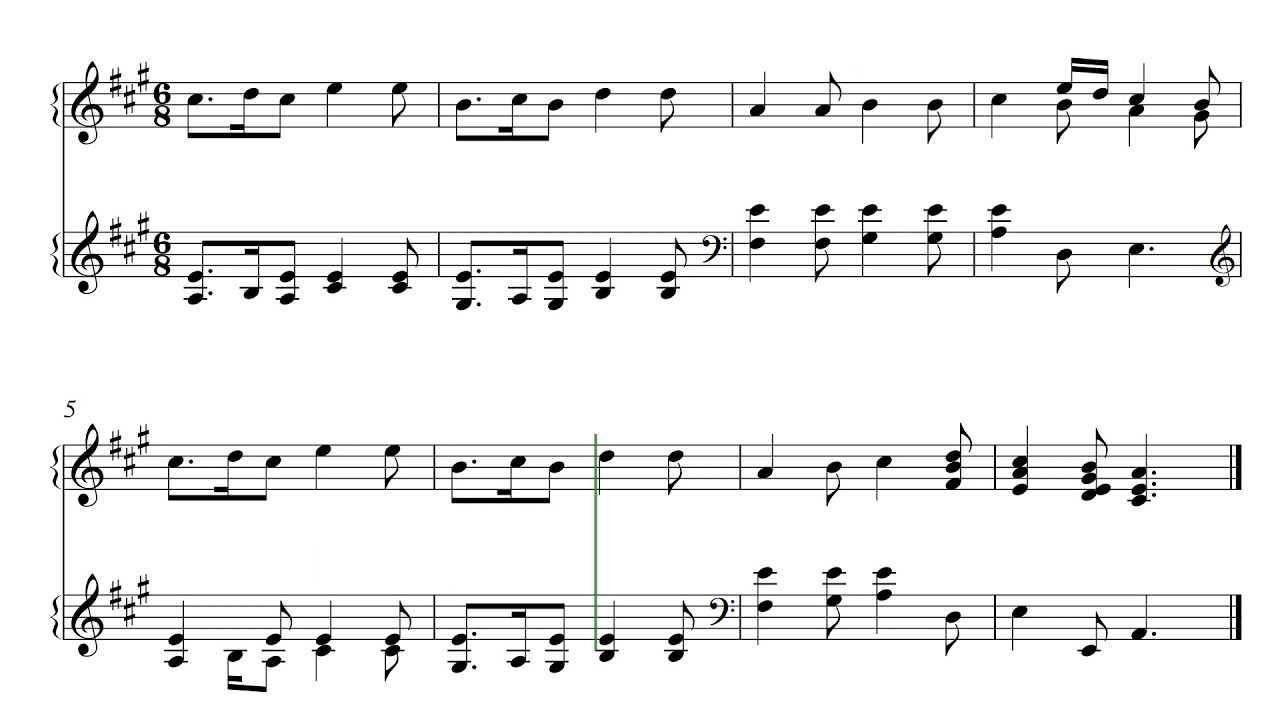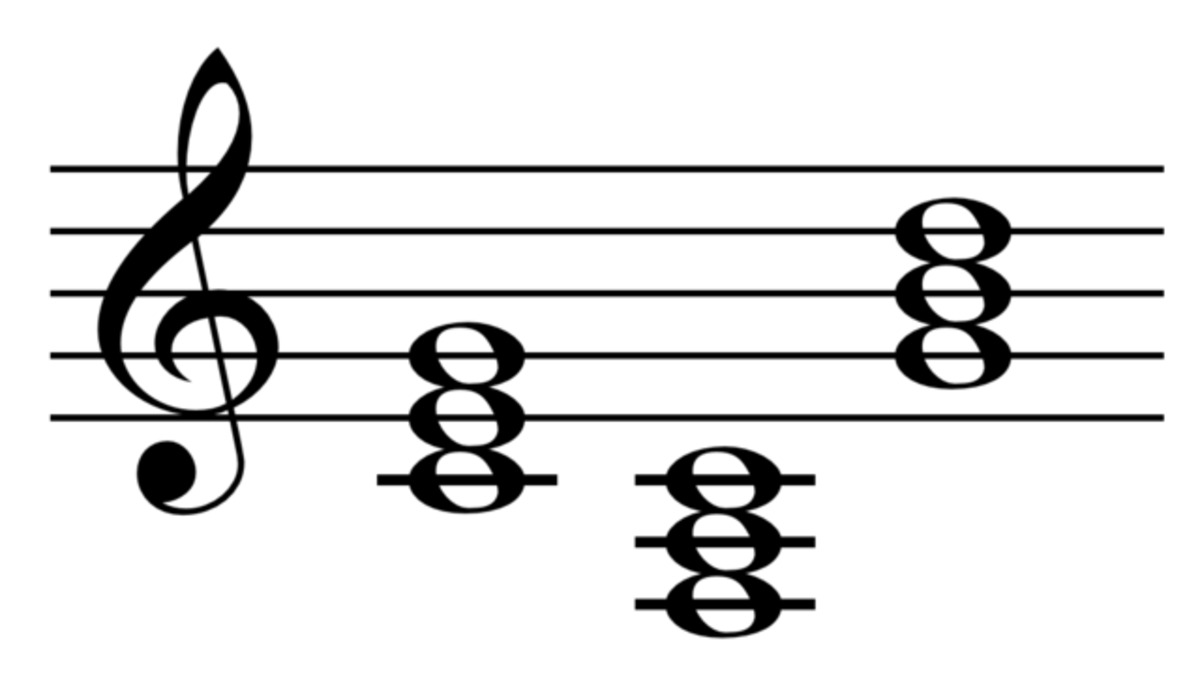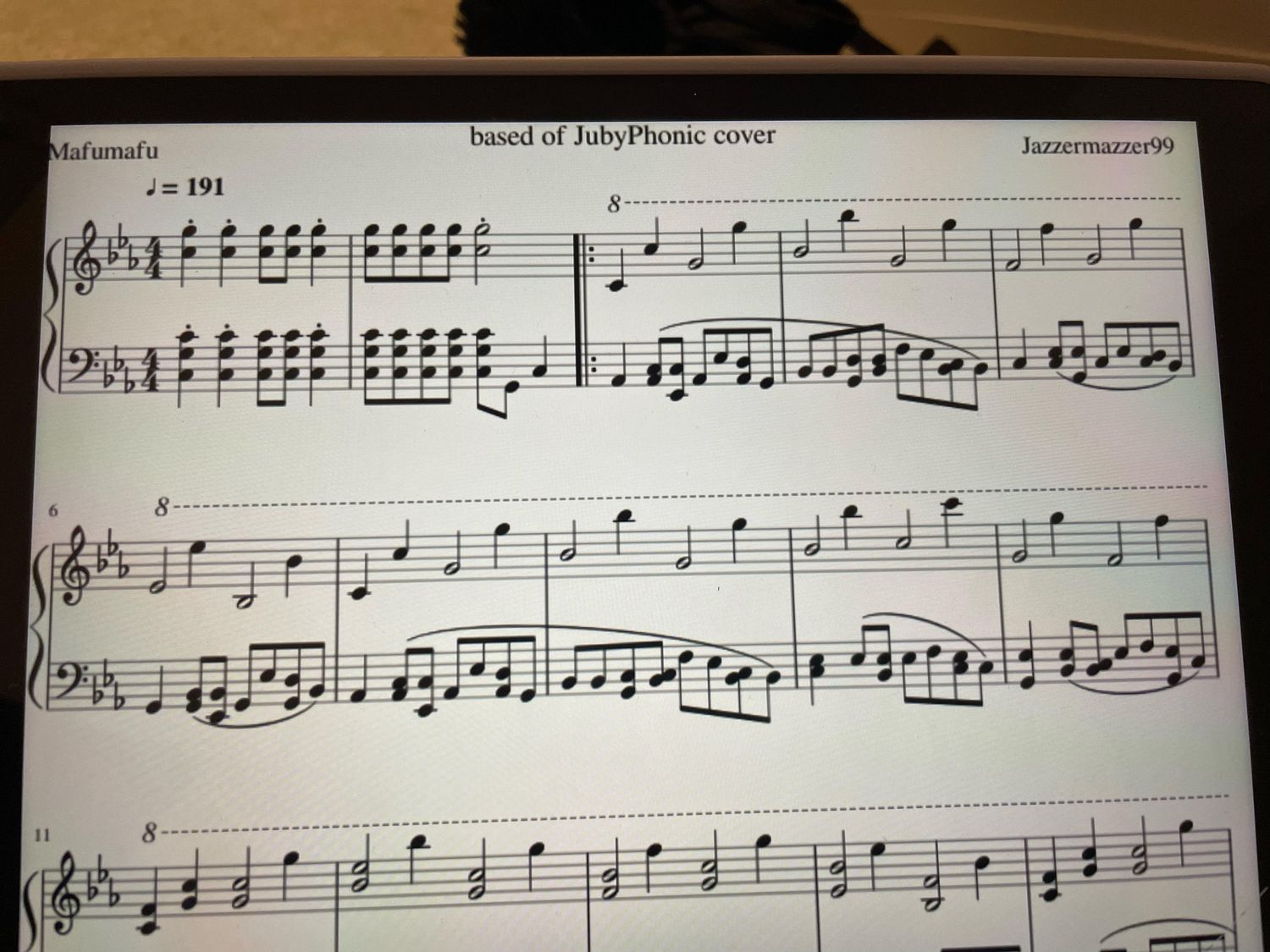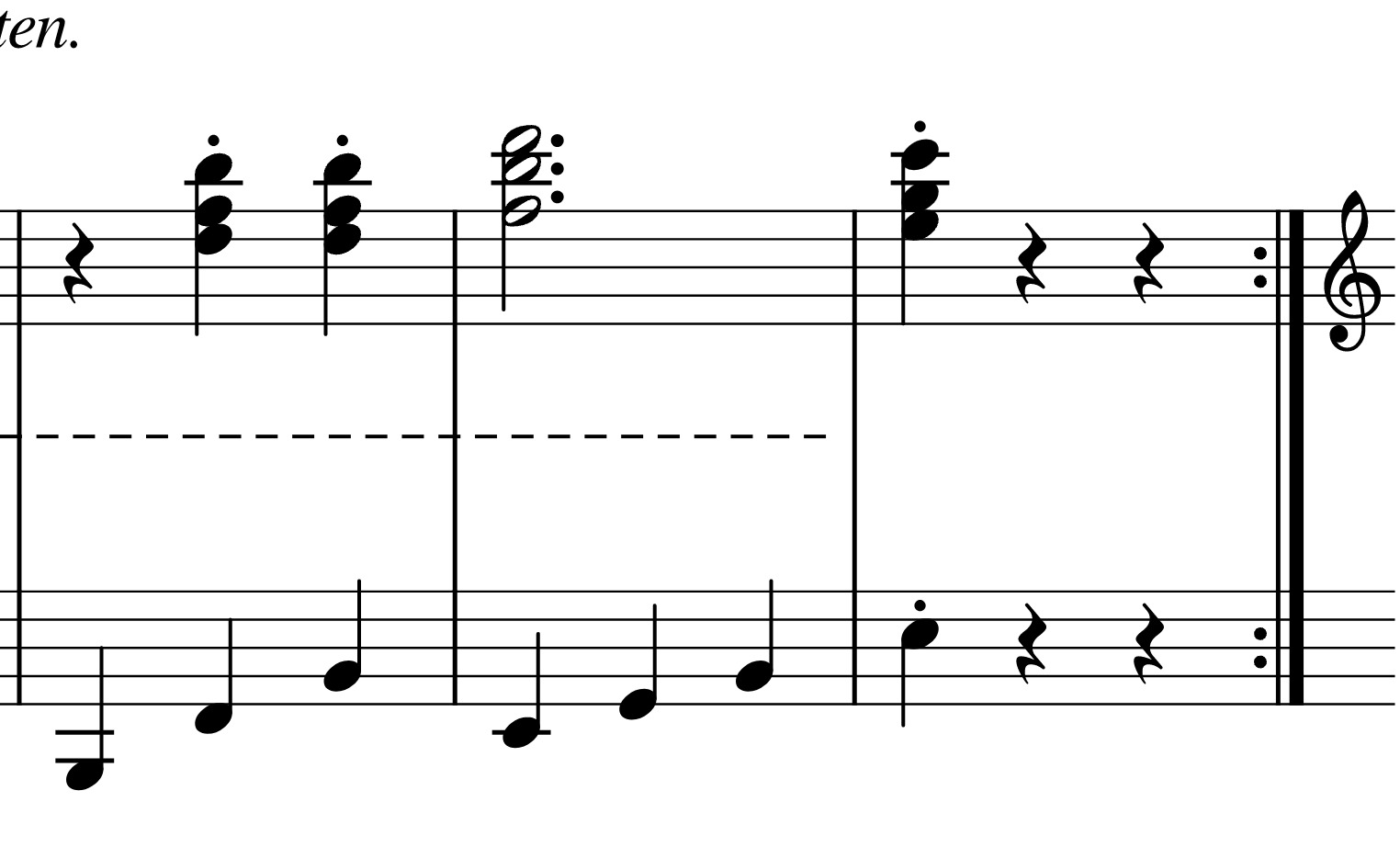Home>Production & Technology>Music Theory>What Is A Subphrase Music Theory


Music Theory
What Is A Subphrase Music Theory
Published: January 31, 2024
Learn about subphrases in music theory and how they can enhance your understanding of the fundamentals. Explore the concept of subphrases and their role in music composition and analysis.
(Many of the links in this article redirect to a specific reviewed product. Your purchase of these products through affiliate links helps to generate commission for AudioLover.com, at no extra cost. Learn more)
Table of Contents
Introduction
Welcome to the fascinating world of music theory! One of the fundamental concepts in this realm is the notion of a subphrase. In this article, we will explore the definition, importance, characteristics, and role of subphrases in musical compositions. Whether you are a musician, a music student, or simply an enthusiast, understanding subphrases can deepen your appreciation and comprehension of music at a whole new level.
Music, at its core, is a language of emotions and expressions. It communicates ideas, tells stories, and evokes feelings through a combination of sounds, melodies, harmonies, and rhythms. Just as words are the building blocks of sentences, musical phrases form the framework of a composition. And within these phrases, we find subphrases – smaller, self-contained units that contribute to the overall structure and narrative of the piece.
Subphrases can be thought of as musical “sentences within sentences.” They provide a sense of cohesion and variation within a larger phrase, adding depth and complexity to the musical arrangement. Similar to how punctuation marks add clarity and structure to written language, subphrases create moments of tension, release, and transition within a musical piece.
The understanding of subphrases is crucial in analyzing, interpreting, and performing music. It allows musicians to decipher the intentions of the composer, shape their musical phrases, and infuse their own artistic interpretation into the composition. Additionally, being able to identify subphrases can aid in memorization and improvisation, as it provides a roadmap of the musical structure.
Throughout this article, we will delve into the characteristics that define a subphrase, the relationship between subphrases and larger phrases, and the role that subphrases play in shaping the musical structure. We will also explore various techniques for identifying subphrases and provide examples from different genres to illustrate their application in practice.
So, whether you are a musician eager to enhance your understanding of musical structure, a music student seeking to deepen your grasp of music theory, or simply a curious individual with a passion for music, join us on this journey as we unravel the mysteries and significance of subphrases in the enchanting world of music theory.
Definition of Subphrase
Before we dive deeper into the concept of subphrases, let’s start by understanding what exactly a subphrase is. In the realm of music theory, a subphrase refers to a smaller unit of music within a larger musical phrase.
A musical phrase can be thought of as a complete musical thought or idea. It is a grouping of musical notes that forms a cohesive and expressive unit. Within this larger phrase, subphrases exist as smaller, self-contained sections that contribute to the overall structure and narrative of the composition.
Subphrases are defined by their musical characteristics, such as melodic motifs, rhythmic patterns, and harmonic progressions. They are often comprised of a distinct melodic or rhythmic idea that stands out within the context of the larger phrase.
It is important to note that the length and complexity of subphrases can vary greatly depending on the musical genre and composition style. In some cases, a subphrase may consist of just a few musical notes, while in others it may span several measures.
Subphrases can be thought of as musical “sentences within sentences”. Just as sentences make up paragraphs in written language, subphrases contribute to the larger structure of a musical composition. They provide a sense of variation, tension, and resolution within the phrase, adding depth and interest to the overall musical experience.
By breaking down a musical phrase into subphrases, composers and musicians can craft a more nuanced and captivating piece of music. Subphrases allow for musical ideas to be developed, repeated, and varied, creating a sense of continuity and coherence throughout the composition.
Understanding the concept of subphrases is vital for musicians and music theorists alike. It provides a framework for analyzing and interpreting musical compositions, allowing us to identify recurring patterns, thematic developments, and structural elements within the music.
Now that we have a clear definition of subphrases, let us explore why they hold such significance in music theory and the role they play in shaping the overall musical structure.
Importance of Subphrase in Music Theory
Subphrases play a crucial role in music theory as they contribute to the overall structure, coherence, and emotional impact of a musical composition. By understanding and identifying subphrases, musicians and music theorists can gain valuable insights into the intentions of the composer and the underlying thematic developments within the music.
One of the key reasons why subphrases are important in music theory is their ability to create variation and contrast within a musical phrase. By introducing different melodic or rhythmic ideas through subphrases, composers can add complexity and interest to their compositions, preventing the music from becoming monotonous or predictable. Subphrases provide an opportunity for musical development and exploration, allowing composers to expand on themes and motifs and keep the listener engaged.
Additionally, subphrases contribute to the overall emotional impact of a piece of music. By carefully crafting the melodic and harmonic elements within subphrases, composers can evoke different moods, feelings, and emotions. Subphrases can build tension, create anticipation, and provide moments of release or resolution, shaping the emotional journey of the listener throughout the composition.
Subphrases also serve as building blocks for larger musical structures. They establish patterns and motifs that can be repeated, varied, or developed in subsequent sections of the piece. By understanding the relationships between subphrases, musicians can better interpret and perform a composition, while music theorists can analyze and identify the underlying structural elements within the music.
Furthermore, subphrases provide a sense of organization and cohesion within a musical piece. They help to define sections and phrases, aiding in memorization and interpretation. By recognizing recurring subphrases, musicians can establish musical landmarks and navigate through the composition more effectively.
Moreover, the identification of subphrases can contribute to improvisation and creative expression. By understanding the underlying structure and patterns within a composition, musicians can confidently explore variations and create their own musical ideas within the framework of the subphrases.
In summary, subphrases are a vital aspect of music theory. They contribute to the overall structure, coherence, and emotional impact of a composition. By recognizing and understanding subphrases, musicians and music theorists can gain deeper insights into the intentions and creative choices of the composer, while also enhancing their own interpretative and improvisational skills.
Characteristics of a Subphrase
A subphrase possesses certain characteristics that distinguish it as a smaller, self-contained unit within a larger musical phrase. Understanding these characteristics can help musicians and music theorists identify and analyze subphrases within a composition.
1. Melodic and Rhythmic Motifs: A subphrase often contains a distinct melodic motif or a rhythmic pattern that stands out within the context of the larger musical phrase. This motif or pattern may be repeated, varied, or developed throughout the subphrase, contributing to its unique identity.
2. Harmonic Progressions: The harmonic progression within a subphrase can provide a sense of stability or tension, depending on the musical context. By analyzing the chords and harmonic relationships within the subphrase, one can gain insights into the harmonic structure and tonal language of the composition.
3. Dynamics and Articulation: Subphrases often utilize changes in dynamics (volume) and articulation (the way notes are played) to add expression and contrast. These variations in dynamics and articulation contribute to the shaping and interpretation of the subphrase, creating a sense of nuance and emotion.
4. Length and Form: Subphrases can vary in length, ranging from just a few notes to several measures. The length of a subphrase is determined by the musical content and the composer’s artistic intentions. Some subphrases may have a balanced or symmetrical form, while others may be asymmetrical or irregular in structure.
5. Phrasing and Breath: Subphrases often have a sense of phrasing and breath, allowing for natural pauses and breaks within the music. These pauses help to shape the overall musical flow and give the listener a moment to reflect or anticipate the next subphrase.
6. Contrast and Variation: Subphrases provide an opportunity for composers to introduce contrast and variation within the larger musical phrase. This can be achieved through changes in melody, harmony, rhythm, or texture. These variations and contrasts contribute to the overall musical narrative and keep the listener engaged.
7. Repetition and Development: Subphrases can be repeated or developed throughout a musical composition, creating a sense of cohesion and musical development. By repeating or varying specific motifs or patterns within subphrases, composers can establish thematic connections and provide a sense of continuity within the music.
By examining these characteristics, musicians and music theorists can identify and analyze the subphrases within a composition. This understanding allows for deeper interpretation, performance, and appreciation of the musical structure and narrative.
Relationship between Subphrases and Phrases
Subphrases and phrases in music theory have a close relationship and are interconnected elements of a musical composition. Understanding the relationship between subphrases and phrases is key to comprehending the overall structure and narrative of a piece of music.
A phrase in music can be thought of as a complete musical thought or idea. It is a cohesive unit that often spans multiple measures and contains its own melodic, rhythmic, and harmonic characteristics. A phrase typically has a sense of arrival or completion, providing a musical “sentence” within the composition.
Within a larger musical phrase, subphrases exist as smaller units that contribute to the overall structure and development. Subphrases often have their own unique melodic and rhythmic motifs, harmonic progressions, and thematic ideas. They can be thought of as smaller musical “phrases within phrases,” providing variation, contrast, and thematic development.
The relationship between subphrases and phrases can be described in several ways:
1. Developing Themes: Subphrases often develop or expand upon the themes established within the larger phrase. They may introduce new melodic variations, rhythmic patterns, or harmonic progressions that build upon the initial musical idea, creating a sense of progression and development.
2. Contrasting Elements: Subphrases can also provide contrast and variation within a phrase. They may use different melodic or rhythmic motifs, utilize alternate harmonic progressions, or evoke contrasting emotions. This contrast adds interest, tension, and depth to the composition.
3. Transitional Function: Subphrases can serve as transitional elements, helping to smoothly connect different phrases or sections of a musical composition. They provide a bridge between phrases, guiding the listener from one musical idea to another, creating a sense of coherence and continuity within the overall structure.
4. Repetition and Recapitulation: Subphrases may be repeated or recapitulated throughout a composition, reinforcing musical motifs and creating a sense of unity. By bringing back familiar subphrases, composers can provide a sense of familiarity, balance, and closure in the composition.
5. Hierarchical Structure: Subphrases and phrases form a hierarchical structure within a musical composition. They are organized in a way that connects smaller musical ideas (subphrases) to form larger musical ideas (phrases). This hierarchical structure helps to define sections, movements, and overall musical form.
The relationship between subphrases and phrases is a fundamental aspect of musical composition. By understanding this relationship and identifying the subphrases within a composition, musicians and music theorists can gain insights into the thematic development, structure, and narrative of the music, enabling deeper interpretation and performance.
Role of Subphrases in Musical Structure
Subphrases play a vital role in shaping the overall structure of a musical composition. They contribute to the organization, coherence, and development of the music, providing a framework for the various sections and elements within the piece.
One of the key roles of subphrases is to establish musical form and sections within a composition. By identifying and analyzing subphrases, musicians and music theorists can recognize the boundaries between different sections, such as verses, choruses, bridges, or instrumental solos. Subphrases serve as building blocks for these sections, providing a sense of order and delineation.
Subphrases also contribute to the development and variation within a musical piece. By introducing different melodic or rhythmic motifs, harmonic progressions, or textures, subphrases create a sense of contrast and evolution within the composition. They allow composers to build upon and develop musical ideas, adding complexity and interest to the overall structure.
Furthermore, subphrases assist in creating musical tension and release. Within a phrase, the subphrases can establish moments of tension through harmonic or melodic dissonance, rhythmic complexity, or dynamic buildup. These moments of tension are then resolved or released in subsequent subphrases or phrases, providing a sense of satisfaction and resolution for the listener.
Subphrases also aid in the establishment of musical themes and motifs. By repeating or varying specific motifs within subphrases, composers can create melodic hooks or memorable musical ideas that are easily recognizable throughout the composition. These recurring motifs contribute to the unity and coherence of the music, providing a sense of musical identity.
Additionally, subphrases allow for musical development and expansion. By repeating or developing certain motifs or patterns within subphrases, composers can create a sense of growth and progression within the music. This development adds depth and complexity to the composition, captivating the listener and keeping them engaged throughout the piece.
Moreover, subphrases aid in the navigation and interpretation of a musical composition. By recognizing recurring subphrases or identifying specific subphrases as significant moments within the music, musicians can establish musical landmarks that assist in memorization and performance. Understanding the role of subphrases can also aid in improvisation, as it provides a roadmap for creative exploration within the structure of the piece.
In summary, subphrases play a crucial role in the musical structure by establishing form, creating development and variation, generating tension and release, and aiding in the establishment of musical themes. They contribute to the overall organization, coherence, and emotional impact of a composition, enriching the listener’s experience and allowing for deeper interpretation and performance.
Techniques for Identifying Subphrases
Identifying subphrases within a musical composition requires careful analysis and attention to detail. By employing specific techniques and approaches, musicians and music theorists can identify the different subphrases that contribute to the overall structure and narrative of the music.
Here are several techniques commonly used for identifying subphrases:
1. Melodic and Rhythmic Patterns: Pay close attention to recurring melodic and rhythmic patterns within the composition. Look for repetitive motifs or rhythmic cells that stand out. These patterns often indicate the presence of a subphrase, as they create a sense of cohesion and identity within the music.
2. Harmonic Progressions: Analyze the chord progressions and harmonic relationships within the composition. Look for changes in chord structure or harmonic cadences that signify the beginning or end of a subphrase. Harmonic shifts can help in identifying the boundaries and organization of subphrases.
3. Dynamic and Articulation Markings: Study the dynamic and articulation markings in the musical score. Changes in dynamics, such as sudden shifts in volume or intensity, often indicate the start or end of a subphrase. Similarly, different articulation markings can suggest the presence of distinct subphrases within the composition.
4. Repetition and Variation: Observe any repeated melodic or rhythmic ideas within the music. Look for motifs or phrases that occur multiple times throughout the composition. Pay attention to any variations or alterations of these motifs, as they may signify different subphrases or developments within the piece.
5. Phrasing and Breath: Take note of natural pauses or breaks in the music. These pauses often indicate the presence of a subphrase, as they provide moments of rest or reflection within the composition. Pay attention to the flow of the music and listen for subtle changes in phrasing that delineate subphrases.
6. Form and Section Markers: Look for formal markers, such as repeated musical sections or specific structural elements within the composition. These markers can help in identifying subphrases that contribute to the larger sections or movements within the overall structure of the music.
7. Listening for Musical Intentions: Engage actively with the music and listen for the composer’s intentions. Pay attention to the overall narrative and emotional journey of the piece. Try to identify musical ideas or themes that are developed or expanded upon, as they may indicate the presence of subphrases.
By employing these techniques, musicians and music theorists can enhance their ability to identify subphrases within a musical composition. This understanding allows for a deeper analysis and interpretation of the music, contributing to a more informed and nuanced performance or appreciation of the piece.
Examples of Subphrases in Various Genres
Subphrases can be found across various genres of music, each employing unique musical elements and structures. Let’s explore some examples of subphrases in different genres to showcase their application and significance.
1. Classical Music: In classical music, subphrases are often prominent within the larger structure of a musical movement. For example, in a sonata form, the exposition section typically consists of subphrases that introduce and develop the main musical themes. These subphrases often have clear melodic and harmonic variations and contribute to the overall thematic development and narrative of the piece.
2. Pop Music: In popular music, subphrases can be observed within verses, choruses, and bridges. Take, for instance, a typical pop song with a verse-chorus structure. The verses often contain subphrases that establish a verse melody and lyrics, while the chorus consists of subphrases that deliver a memorable and catchy hook. These subphrases contribute to the overall catchy and infectious nature of the song.
3. Jazz Music: In jazz music, subphrases play a vital role in improvisation. For example, during a jazz solo, the musician may develop and explore various subphrases, altering the melodic and rhythmic motifs to create variations and musical conversations. The improvised subphrases provide a sense of spontaneity and individuality within the framework of the composition.
4. Rock Music: In rock music, subphrases often contribute to the dynamic and energetic nature of the genre. Consider a typical rock song with verses, choruses, and instrumental breaks. The verses might consist of subphrases that deliver the lyrics and establish a melodic theme, while the instrumental breaks showcase subphrases characterized by guitar solos or other instrumental improvisations, adding excitement and virtuosity to the composition.
5. World Music: In world music, subphrases can be found in a variety of cultural contexts and traditional music styles. For example, in Indian classical music, subphrases are integral elements within melodic and rhythmic improvisations. These subphrases, known as “gats” or “tihais,” are repeated and developed to create intricate patterns and rhythmic cycles, adding complexity and depth to the music.
These examples highlight the diverse application of subphrases across various genres of music. Whether it’s the structured sonata form of classical music, the verse-chorus structure of pop music, the improvisational nature of jazz, the energetic dynamics of rock, or the intricate patterns of world music, subphrases contribute to the overall musical structure and enhance the expressive qualities of the compositions.
By studying subphrases within different genres, musicians and music theorists can gain a deeper appreciation for the diversity of musical forms and the role that subphrases play in shaping the unique characteristics of each genre.
Conclusion
Subphrases are fundamental elements of music theory that play a significant role in the composition, structure, and interpretation of music. They provide variation, contrast, and thematic development within a larger musical phrase, contributing to the overall narrative and emotional impact of a composition.
By understanding the characteristics and relationships of subphrases, musicians and music theorists gain valuable insights into the intentions of the composer and the underlying structure of the music. Subphrases allow for the identification of recurring motifs, thematic development, and the establishment of musical landmarks within a composition.
From classical music to pop, jazz to rock, and world music to various traditional styles, subphrases can be found across genres, showcasing their versatility and importance. Whether it’s the development of themes in a classical sonata, the infectious hooks of a pop song, the improvisational nature of jazz, or the energetic dynamics of rock, subphrases shape the musical experience and captivate listeners.
Identifying subphrases requires careful analysis of melodic and rhythmic patterns, harmonic progressions, dynamics, and other musical elements. By employing these techniques, musicians and music theorists can deepen their understanding and interpretation of a composition, enabling more nuanced performances and heightened appreciation of the music.
Subphrases are the building blocks of musical structure and serve as the connecting threads that weave together melodies, harmonies, and rhythms. They create moments of tension and release, establish themes, and provide a sense of development and variation. Subphrases reflect the creative choices and intentions of the composer and bring the music to life.
So, the next time you listen to a piece of music, pay attention to the subphrases within it. Allow yourself to delve into the intricate details and structure, and discover the beauty and complexity that subphrases bring to the musical journey.
Whether you are a musician, music student, or simply a lover of music, embracing the concept of subphrases will enhance your understanding, interpretation, and enjoyment of the intricacies and nuances that lie within the world of music theory.











